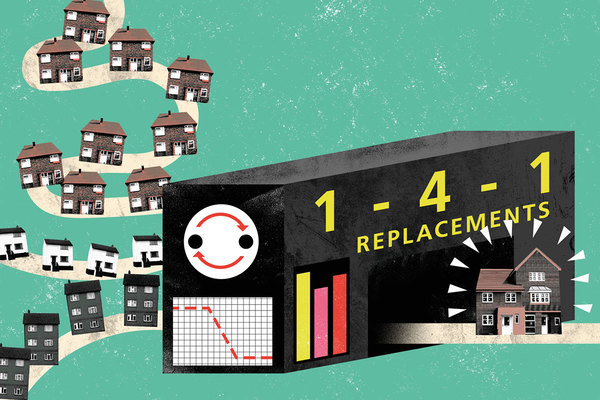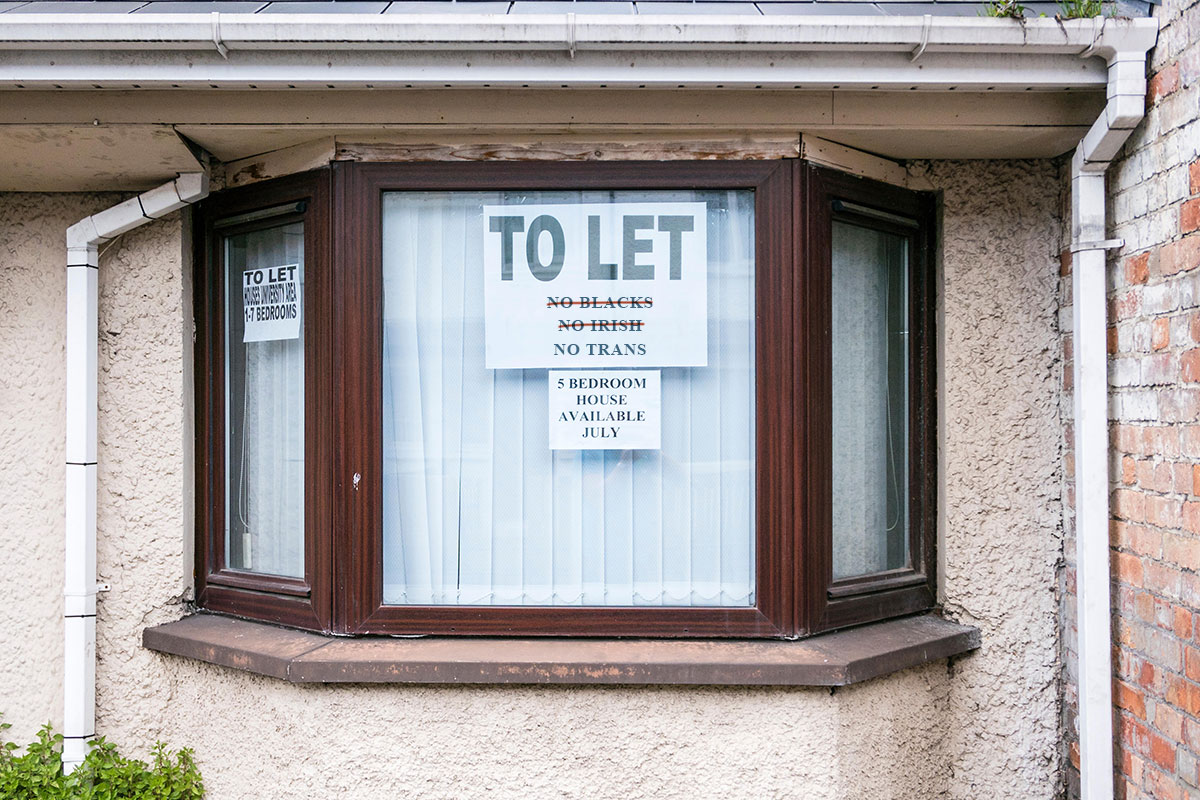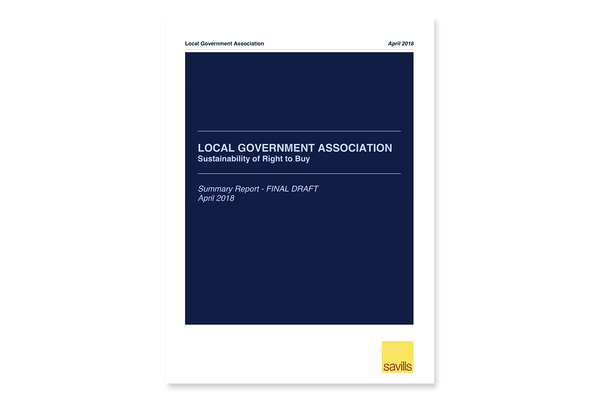You are viewing 1 of your 1 free articles
Awaiting Right to Buy replacements
Homes sold under the Right to Buy are simply not being replaced. Could the government’s plans to partially lift the council debt cap bring relief? Michael Lloyd reports
Unsustainable. That was the conclusion of a recent report on the Right to Buy, and in particular the government’s promise that homes sold to tenants would be replaced ‘one for one’.
Over-complex and counter-productive rules about how, and how much of, the sales receipts can be spent on new housing are the cause, according to the report for the Local Government Association (LGA), written by housing consultancy Savills.
The report’s modelling shows that councils will be able to build or buy a mere 2,000 replacement homes, from 12,000 sales across England, five years hence.
Looking back, Steve Partridge, director of Savills, says that in 2012 when the Right to Buy was reinvigorated, replacement was never part of the plan. “I’m not certain at the time that it was part of [the government’s] thinking to reinvigorate the Right to Buy and then let local authorities replace the stock. I don’t think that was part of the plan.
"The report’s modelling shows that councils will be able to build or buy a mere 2,000 replacement homes, from 12,000 sales across England"
"I think that was the result of a successful lobbying campaign by local authorities,” he argues.
The government’s position has moved on since 2012.
Most recently, the Ministry of Housing, Communities and Local Government has announced extra borrowing capacity for some councils, which was at the top of the wish list for most of those local authorities wanting to build more homes (and Savills’ projections do not take this into account). Further changes could be on the horizon.
Still, the future is far from certain. As Inside Housing reported last week, the debt cap loosening applies to 165 councils which are eligible to borrow more because private rent outstrips social rent by more than £50 a week. Of these, 117 are Conservative, with only 18 Labour and eight Liberal Democrat councils.
Only 11 are in the North of England, and the formula used by the government heavily benefits wealthier areas.
Savills doesn’t just put failure to replace stock down to the debt cap, so the impact may be limited. Another issue is that local authorities must spend sales receipts within three years, or they will revert to the Treasury.
Looking in depth at two social landlords, both arm’s-length bodies owned by local councils, gives us some clues to just how complicated it will be to get actual one-for-one replacements. One is in Derby, the other is in Oxford. Although these cities are only 100 miles apart, and both share problems with replacing Right to Buy homes, the reasons are quite different.
Tourists may see Oxford’s dreaming spires as evidence of solid prosperity, but it has significant housing issues, according to David Watt, a finance business partner at the city’s regeneration financial services, a directorate of the council. Not least is the cost of housing.
“We are classed as being the most unaffordable place to live in the UK... more so than London. We have London house prices but local wages are certainly not that,” he says.
Oxford is a medium-sized authority with approximately 7,500 council tenants. Its problems are paralleled in local authorities across much of Southern England, outside London.
Mr Watt makes it clear that the city desperately needs more affordable housing to retain key workers in the vital health, university and local government sectors.
“Provision of affordable housing is certainly high on the agenda of this local authority,” Mr Watt says. He explains that there are major plans to expand such housebuilding in Oxfordshire, with a target of 100,000 new homes in the next 20 years.
The area’s five district councils, Oxfordshire County Council and the local enterprise partnership company, OxLEP, will work together to deliver them.
The council has two delivery vehicles, Mr Watt explains, “the Housing Revenue Account being one and our arm’s-length local housing company Oxford City Housing Limited [OCHL] the other. We are providing for a range of housing with an emphasis on social housing”.
So, what would he like to see changed in the one-for-one replacement rules, to help his authority meet its target? He welcomes the government’s announcement of a partial debt cap rise but wonders if it has been extended far enough.
He says that the cap itself is unnecessary and the prudential borrowing rules already applied to local government spending are sufficient to stop authorities over-extending themselves.
Housing in Derby, where discount levels are a concern (Picture: Alamy)
As for using Right to Buy receipts to help fund replacement housing, Mr Watt remains disappointed with the government so far for continuing to prohibit them from being recycled within wholly owned local housing companies, like OCHL. He thinks the greater financial flexibility available to the arm’s-length company could make the money go further.
Mr Watt says he is aware that many other local authorities are struggling with the one-for-one rules. “I suspect from discussions with colleagues in other authorities that more money than expected has been returned to the Treasury because it can’t be spent within the format of the
current regime,” he says.
Mr Watt says he is aware that many other local authorities are struggling with the one-for-one rules.
Since 2012, Oxford has lost 194 homes through the Right to Buy. The council says it intends to “retain and recycle” all receipts from sales, but so far has built only 88 replacement homes.
Unlike Oxford, Derby is first and foremost a manufacturing city, home to thousands of jobs at Rolls-Royce and its suppliers’ plants. It has lower house prices and is more affordable than Oxford, given relatively high local wages.
But that means different, rather than fewer issues with one-for-one replacement, according to David Enticott, finance director of the council’s arm’s-length housing organisation, Derby Homes.
Perhaps surprisingly, affordability can be a double-edged sword. Housebuilding costs don’t vary by much across England but house values differ hugely. It follows both that receipts from Right to Buy sales will be lower on individual properties in some areas, and that there may be higher sales.
Read our exclusive investigation from last December into ex-Right to Buy homes now let privately
Derby has to deal with both of these problems, and rather than simply increasing the debt cap, Mr Enticott’s concern is to “get a discount on the discount”. At present he says it is very hard to make the replacement scheme viable.
Derby sold 185 council homes last year under the Right to Buy – nearly 1.5% of its stock. On average they were valued at £101,000, with the average discount 47% overall and around 60% for flats. So, before deductions the average sale receipt the council received was around £54,000.
But this sum isn’t the end of the story. £1,300 must be spent on administrative costs and then the debt on the property is repaid, which is on average around £22,000.
So, in theory, £30,700 is left to invest in building or buying a new council home. But before any of that money can be used, Derby has to pay a lump sum levy to the Treasury of £1.2m, irrespective of the number or value of houses sold. Effectively, no replacement money is available at all from the first 39 homes sold under Right to Buy.
The money left is put towards replacement but, Mr Enticott says, it is barely enough.
“There is effectively £30,700 available to meet 30% of the costs of a new property – so if it costs £102,000 then it ‘sort of works’ as a principle. But only on those properties beyond the initial 39 needed to meet the levy,” he says.
“Even if we can build or buy for £100,000 a unit then we would only have the resources to meet about two for three rather than one for one. In practice, build costs are slightly higher and we now need to factor land costs into future developments, which might add another £20,000 per home.”
That is the average case. But in some instances, the council has no money to put towards replacement from a sale at all.
“Say a flat is valued on the open market at £55,000. The tenant has lived there for 15 years and qualifies for the maximum 70% discount. From the sale price of £16,500, you have to deduct the admin costs and the debt, which can be as much as £22,000. That leaves minus £6,000 available for replacing it,” Mr Enticott explains.
He would like to see discounts capped at their pre-2012 level locally, of £26,000.
With some movement already evident from the government on the debt cap, both Mr Enticott and Mr Watt are hopeful that there will be more positive announcements from the housing ministry later in the summer.
From his recent contacts with the department, Mr Watt thinks there has been a mood shift in the housing ministry.
At Savills, Mr Partridge agrees that there are hopeful signs.
“There has been a change of tone since the change of prime minister,” he says. “They just want numbers, the more of them the better – that’s why they are doing this. They are not meeting national targets and that’s in all housing sectors.”
Mr Enticott also remains hopeful. But whatever changes are made, he thinks they need to respect the local situation, in particular council areas, far more than the present rules do.
“It is about localising policy. We know what works and what doesn’t work and we need to be given the freedom to operate within those parameters. If you say everyone’s got to work by exactly the same rules, it tends not to work so well.”















